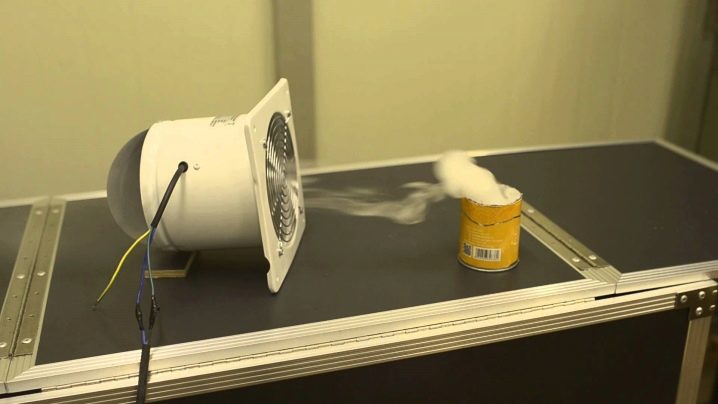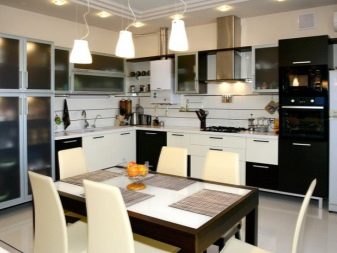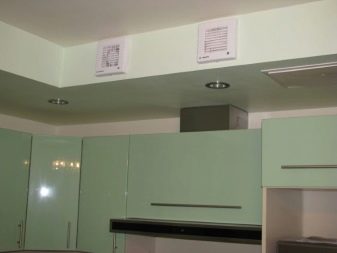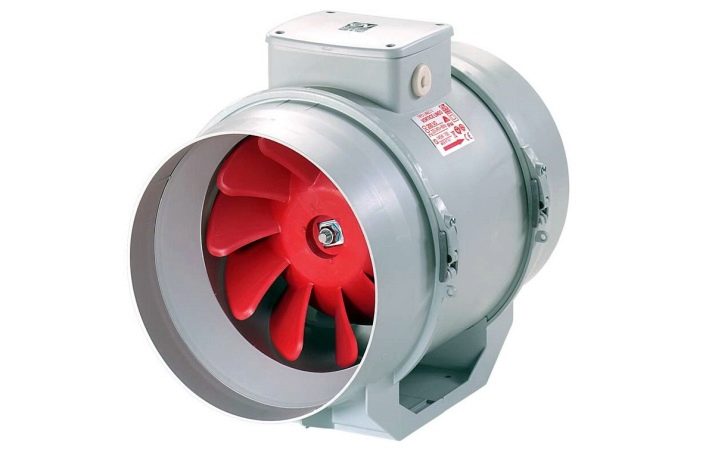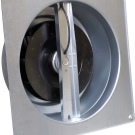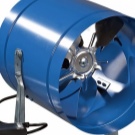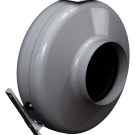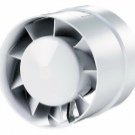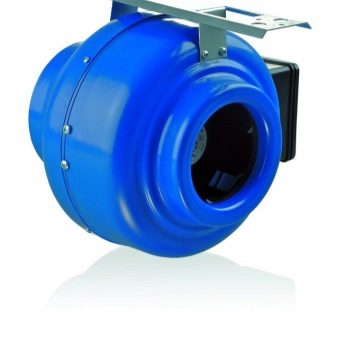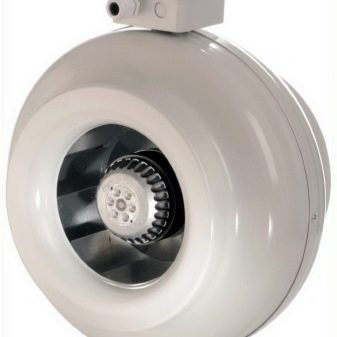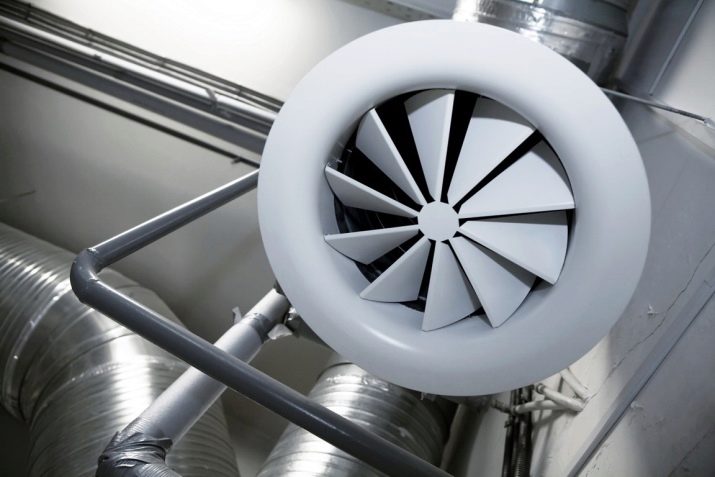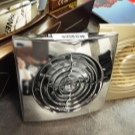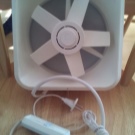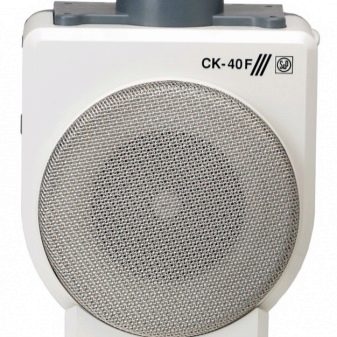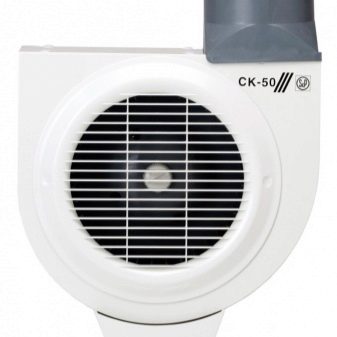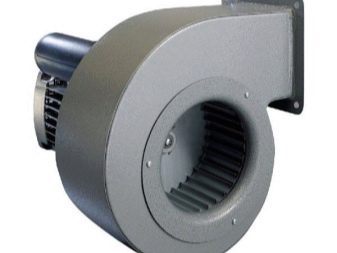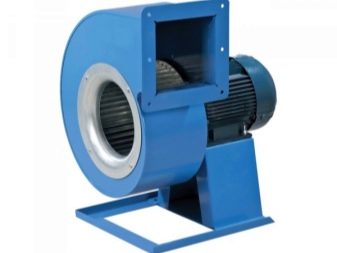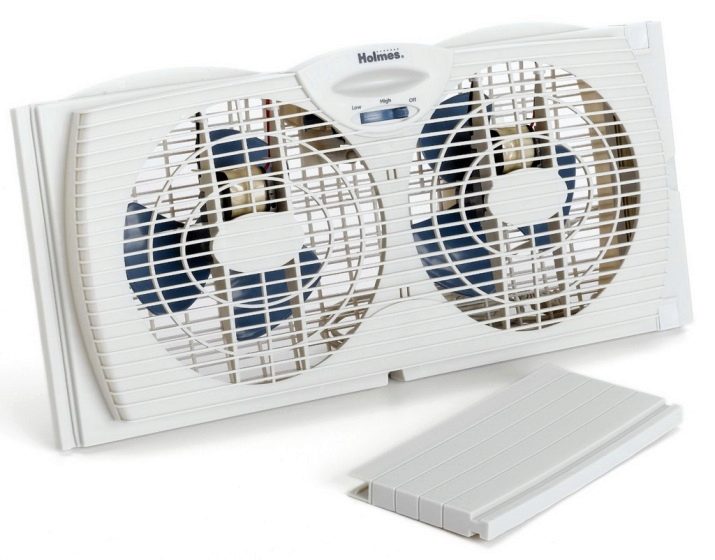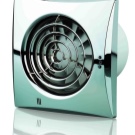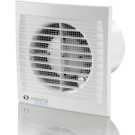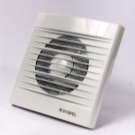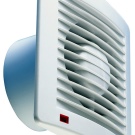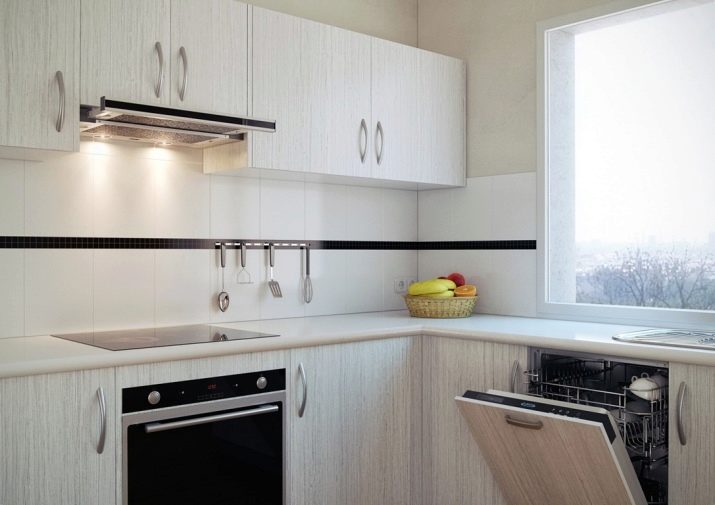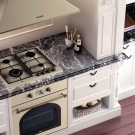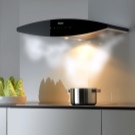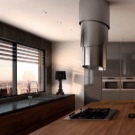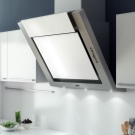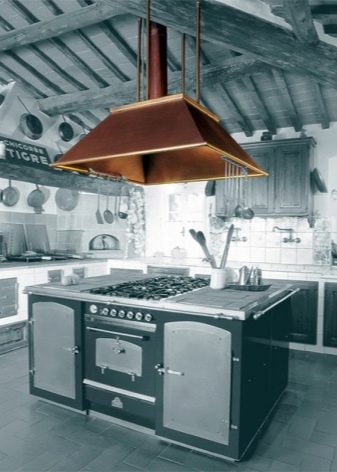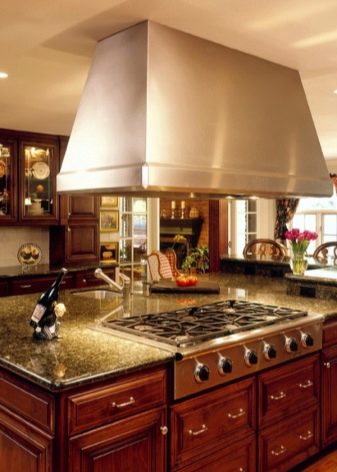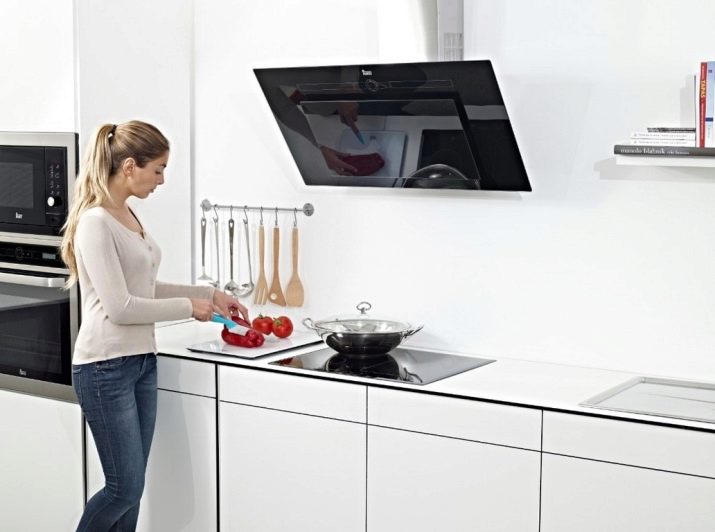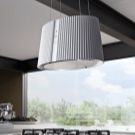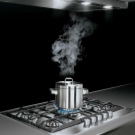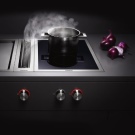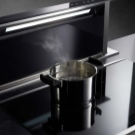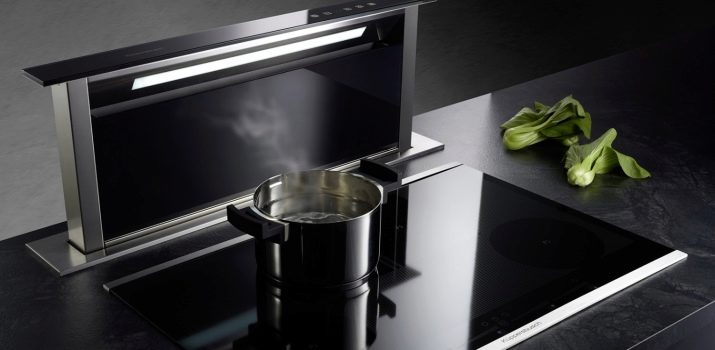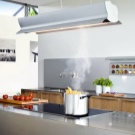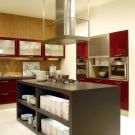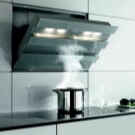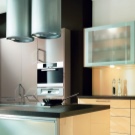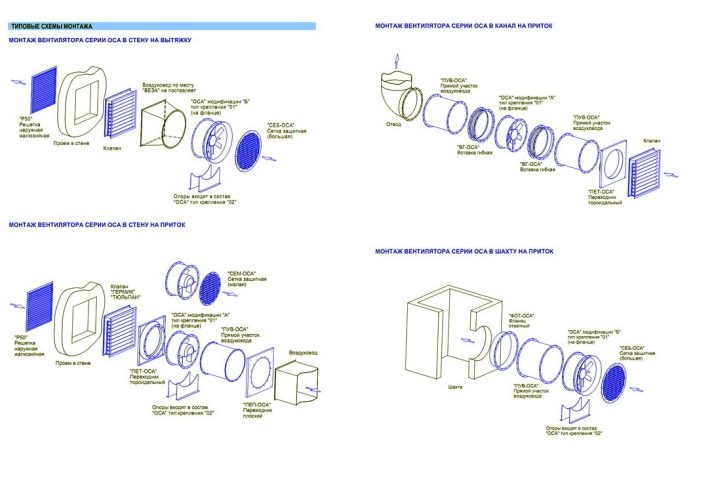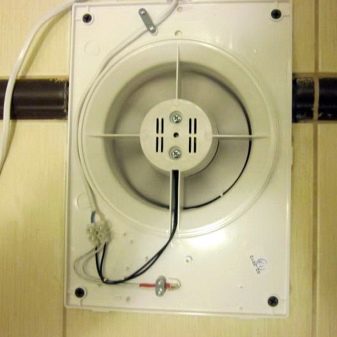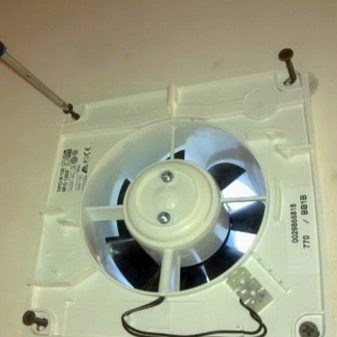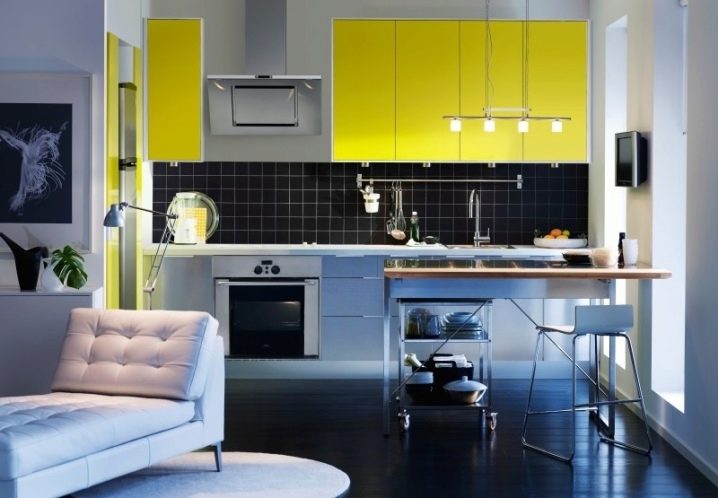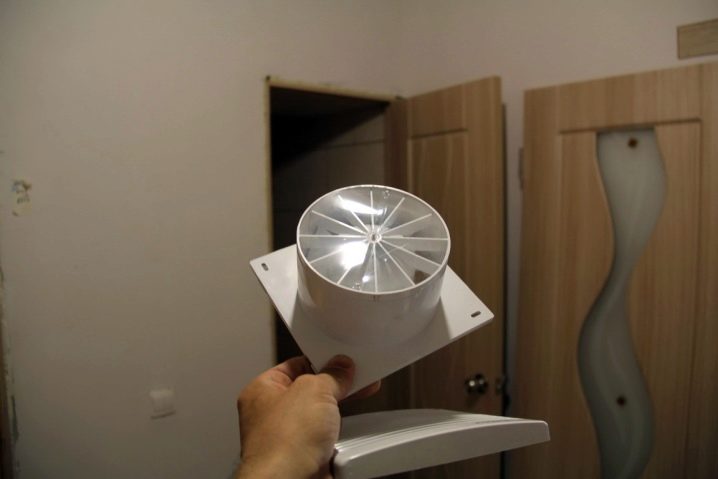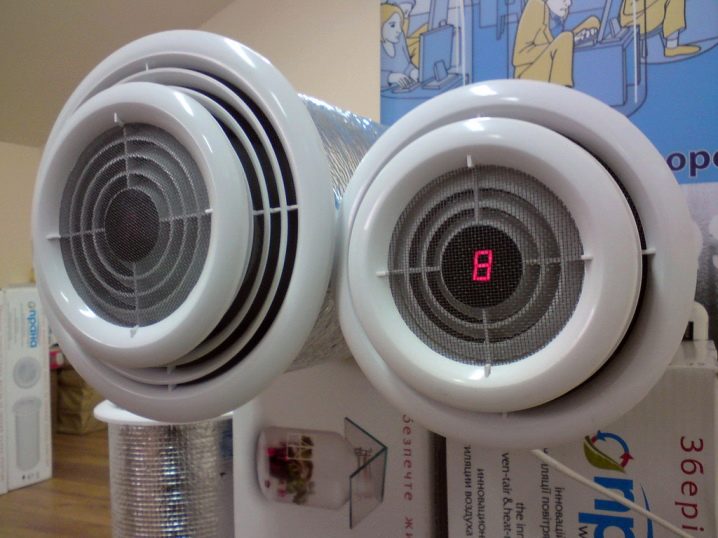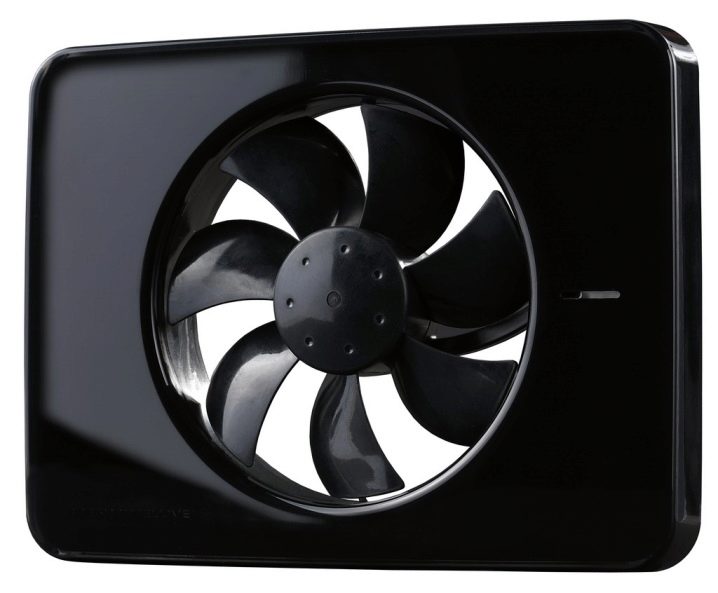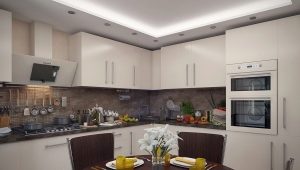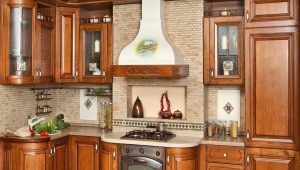Exhaust fan for the kitchen
Special features
The exhaust fan for the kitchen is a simple and reliable way of air exchange in a room where high humidity, high temperature and odors are constantly present. When repairing an apartment, be sure to pay attention to the selection and installation of this simple, but very useful device. In apartment buildings in every kitchen there is a hole that goes into the common ventilation shaft. It does not fully cope with the task of exhausting, tends to clog over time, and may lack traction for full ventilation. Installation of the fan will help to solve this problem, and in a private house, where there is no centralized ventilation system, it is simply necessary.
The kitchen fan is a small-sized device with blades that rotate due to an electric motor connected to a 220 V household network.The power of such devices for standard kitchens does not exceed 320 cu. m / h, and the noise level is not more than 35 dB, which does not cause discomfort even during long stays in the room. Such fans, regardless of their type, are easy to install and plug in by yourself.
Species
There are 3 groups of similar kitchen appliances: duct, wall and window.
Duct fan it is mounted directly into the air duct, its front part with a decorative grill goes into the room, the tube with a check valve is directed to the ventilation shaft. Inside the device has the following details:
- the electric motor from the alternating current main with a power of 100 - 400 W;
- aerodynamic impeller with blades;
- ball bearings for efficient rotation;
- rubber inserts to reduce vibration during operation;
- check valve.
On the front panel in advanced models there may be operation mode control buttons, but often such fans operate in automatic mode.
Duct fans are lightweight and easily mounted in a hole in the wall. Their advantages in comparison with other types are high efficiency of work, noiselessness,reliability and durability, versatility.
The shape of the case channel fans can be rectangular, square and round. You can choose a model depending on the shape and size of the vent. The most common devices with a square face part with dimensions of about 150 to 150 mm.
Wall fans for the kitchen, they are mounted inside the room, and the air exchange takes place through the exhaust pipe that goes from the device's check valve to the vent or to the street through the window. Exhaust pipes are usually made of thin aluminum, which is not exposed to moisture and high temperatures. Such fans can be installed on the hood above the stove, inside its case.
The advantages of wall fans are as follows:
- such a device can be installed in a place most required for ventilation, for example, above a gas stove;
- there are models with high power and wide blades that effectively carry out air exchange in any kitchen;
- their hulls are strong and durable;
- simple device makes it easy to repair and maintain.
The drawbacks of wall fans are the selection of free space in the kitchen, the need to make reliable fixtures in the wall or on the ceiling, a higher level of noise and power consumption than channel types.
A separate type of wall fans is a snail model, so named because of the appropriate shape. A similar design was invented to effectively move large volumes of air using a rotor with inclined blades and a spiral casing. The aerodynamic impeller in the cochlea is made of durable and lightweight steel, and the casing is aluminum. The construction itself is very simple and easily repaired, and you can hang it in the kitchen in the right place. These types of fans are mainly used in large premises and industrial workshops, but for domestic purposes there are also small kitchen models with dimensions of 25–50 cm, a power of 200–300 W and a noise level of no more than 35 dB.
Window fan It has approximately the same device as the channel one, only its body can be narrower in order to fit comfortably into the window thickness. He performs air exchange with the street, which, even in comfortable weather, is successful, as fresh street air enters the room and not odors from other apartments through the ventilation shaft.But in the bitter cold it can create an unwanted cold in the kitchen. Installation of such a device in a window opening can cause difficulties: it is necessary to fix it comfortably in the window, to power up.
Hood in the kitchen, where every day food is prepared, in any case necessary. If a gas stove is installed in the house, then even a couple of hours spent near it can cause headaches and discomfort. For electric stoves, the hood is also relevant, it will allow you to create a regular fresh atmosphere in the cooking zone that does not cause discomfort. The most effective option is an exhaust umbrella. Forms and design can be varied, but the principle is one - the base with a wide area, covering the entire plate, which tapers upward with the output in the duct.
For domestic use in the kitchen are used various types and materials of exhaust umbrellas. They can be in the form of a pyramid or a prism, streamlined in the form of a dome or rectangular.
Most often for the manufacture of the body using stainless steel with different coatings that protect from moisture, soot, creating a pleasant shiny or matte shade.At the bottom of the hood there are filters for air and for trapping fatty spots, on the front panel there are control buttons and indicators.
The exhaust fan is located inside the case of such an exhaust, its power should provide reliable vertical air flow. In most cases, the umbrella is connected to the duct with a ventilation hole, the pipe can drag a few meters. Such models also require power connections.
In addition to the usual models of exhaust umbrellas, in the modern design of the kitchen island variants are often used when the stove is in the middle of the room. The discharge pipe is in this case vertically. There are also wall models that are attached to a vertical surface at a slight inclination. They are remarkable in that they practically do not take free space from the kitchen.
Ventilation installation
It is easiest to mount duct fans because of their small mass and dimensions. First of all, it is necessary to calculate that the case fits into the ventilation hole of the kitchen. Usually this does not cause problems, since communications in typical apartments and duct fans have certain standards for dimensions.The hardest part of such an installation is wiring the cable to power the device. If you can’t do it yourself, it’s enough to call an electrician to connect one point to the required place.
Then the face shield of the fan is attached to the wall around the vent. This is best done with dowels and screws in the concrete wall. 4 holes are needed - at the corners of the front case. For modern models due to their lightness and internal protection against the vibration of this fastener is enough.
Fastening window fan may have its own nuances due to the peculiarities of the vents, frame size, glass materials. But in general, it is slightly different from the installation of channel types.
Wall fans and exhaust umbrellas due to large size, bulky dome structures and long air ducts are more difficult to install. Reliable methods of fastening are necessary, taking into account the large weight and possible vibration.
Tips for choosing and installing
It is necessary to buy a fan model for a kitchen, first of all in terms of its capacity. For these devices there is a special value - the rate of air exchange, which is determined by the ratio of the volume of air entering the air and the volume of the room for 1 hour. For kitchen varieties, this figure is 6 - 12.Multiplying the air exchange rate for this unit by the volume of the kitchen, you can get its working capacity. It determines whether the fan will cope with providing fresh air in the room.
In technical data sheets of devices the working power in watts can be indicated. But it is not a decisive indicator of efficiency, the size and shape of the blades, the type of casing and check valve, the speed of rotation and the direction of flow also affect the air exchange.
Most modern models of fans for the kitchen have a noise threshold of 35 dB, which is slightly above the noise level at the whisper - 30 dB. It is worth choosing not only powerful, but also noiseless goods that will not bring discomfort from annoying sound.
Fans from time to time need to clean the blades and protective grills. Therefore, it is necessary to consider when purchasing the ease of access to these details.
Any type of fan must be installed at the top of the kitchen - closer to the ceiling, where the stale warm air is most concentrated. But do not install the device in an area where the air temperature is more than 50-60 ºС, from which the parts and the working part can become unusable.The places of electricity supply to the fans must be reliably insulated and protected from moisture.
The best option for housewives who love to cook and spend a lot of time in the kitchen, this exhaust hoods with a powerful air circulation system, filters and several modes of operation. They are not only functional, but with the right layout will create a pleasant addition to the kitchen interior, combined with furniture and other household appliances.
But if the budget does not allow, and you need to ventilate the room, then you can install a compact wall or duct fan instead of exhaust. In the future, when it becomes possible to install a more complex system, it can be transferred to the bathroom, closet or toilet.

